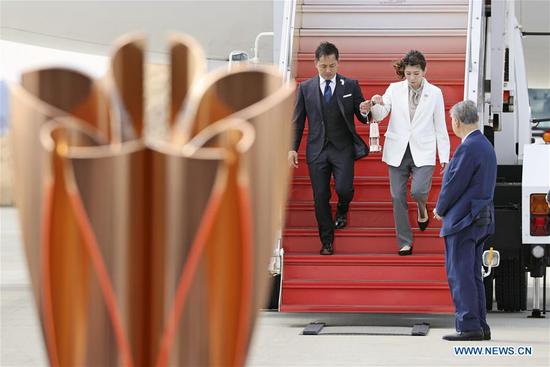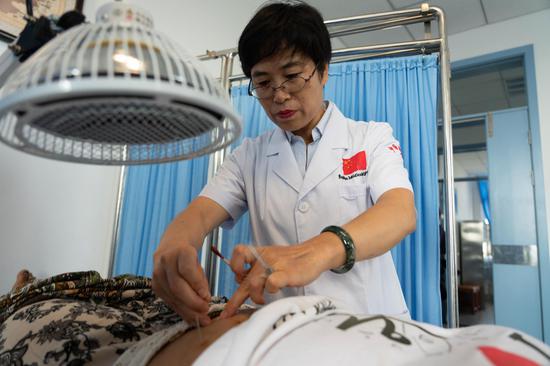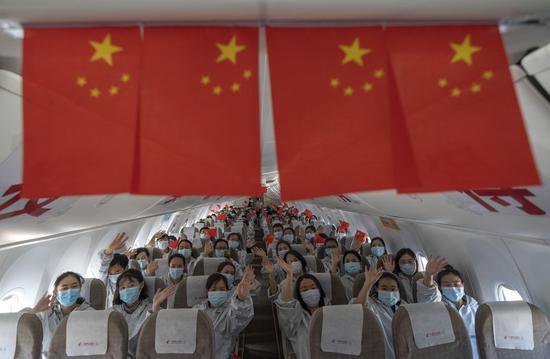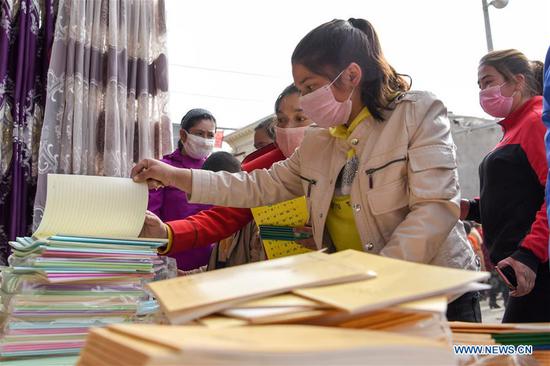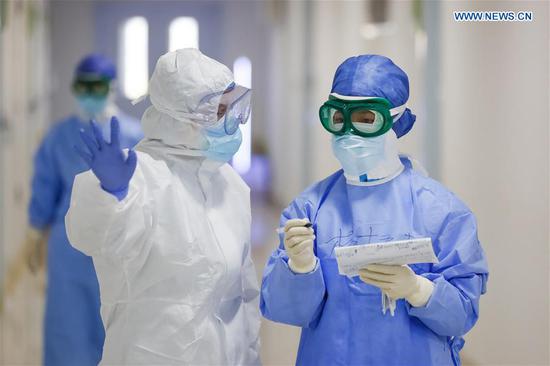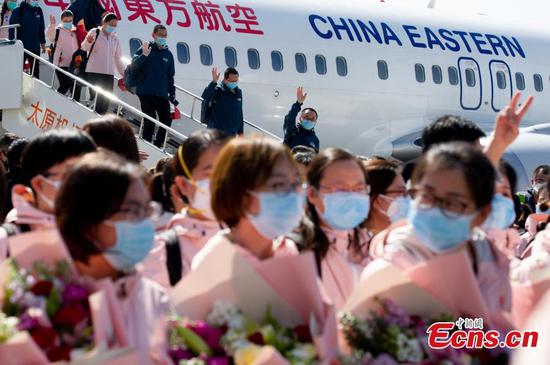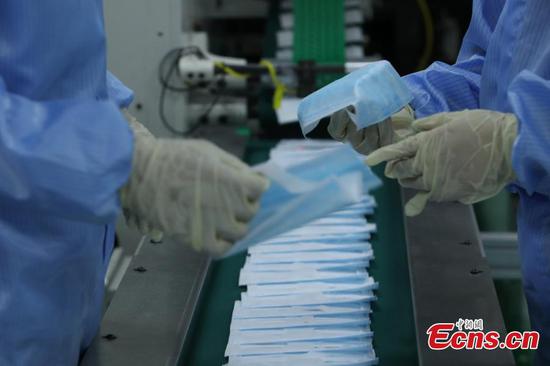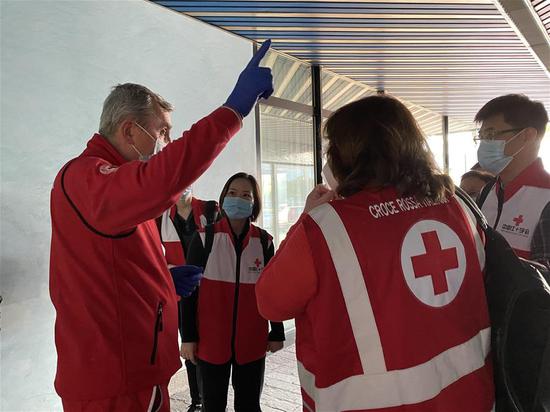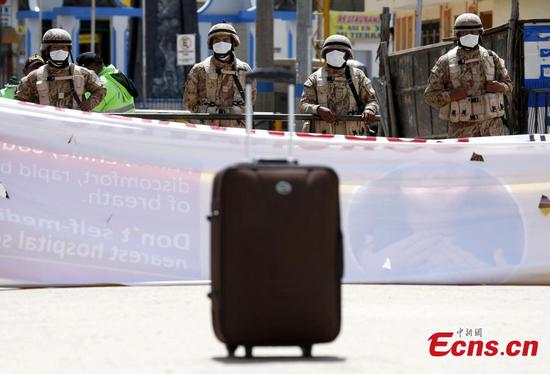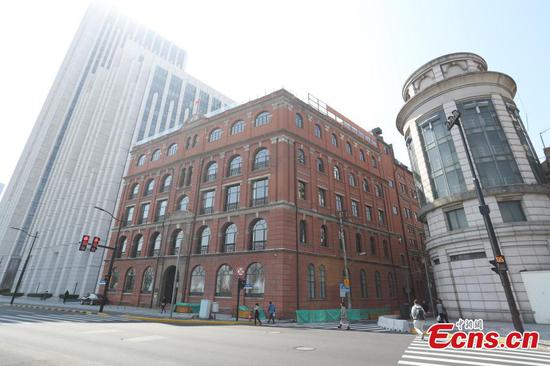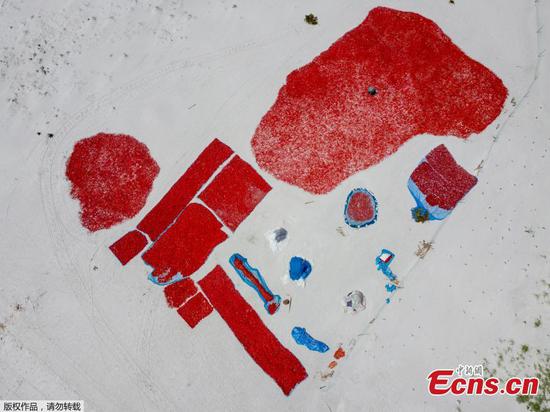TURNING TIDE
The Chinese mainland began to see a drop in the number of COVID-19 patients on Feb. 18, after the number of recovered patients surged and new cases declined. By late February, the virus had withdrawn from most regions on the Chinese mainland, with only single-digit daily increases of infections in areas outside Wuhan.
On March 6, the epidemic epicenter Wuhan slashed the daily increase of confirmed cases to below 100, down from a peak of more than 14,000 in early February. Bruce Aylward, who led the China-WHO joint mission on COVID-19, said the outbreak in China had come down "faster than would have been expected."
On March 11, the daily increase of locally transmitted infections dropped to single digits for the first time on the Chinese mainland, where the virus has so far caused a total of 80,928 infections and 3,245 fatalities, defying earlier predictions by foreign researchers of a more extensive national outbreak.

A staff member passes nucleic acid test kits at the plant of Luoyang Ascend Biotechnology Co., Ltd in Luoyang, central China's Henan Province, March 4, 2020. (Xinhua/Li Jianan)
Behind the downward trends were a raft of strong measures taken by the Chinese government, including canceling mass events, closing scenic attractions, suspending long-distance buses and asking hundreds of millions of Chinese to stay indoors to break transmission chain.
On Jan. 23, Wuhan declared unprecedented traffic restrictions, including suspending the city's public transport and all outbound flights and trains, in an attempt to contain the epidemic within its territory.
The situation in Wuhan and its nearby cities was grim. Officials said more than 3,000 medics in Hubei contracted the virus at the early stage of the outbreak due to limited knowledge of the virus. Many families lost multiple loved ones.
Following reports of overloaded local hospitals, more than 42,000 medical staff, including those from the military, were dispatched to Hubei from across the country. At the peak of the fight, one in 10 intensive care medics in China were working in Wuhan.
Fleets of trucks carrying aid goods and displaying banners of "Wuhan be strong!" rushed to the city from all corners of the country. Under a "pairing-up support" system, each city in Hubei is taken care of by at least one provincial-level region.
To ensure the timely admission of patients, two hospitals with a total of 2,600 beds were built from scratch in Wuhan within about two weeks, and 16 temporary hospitals were converted from gyms and exhibition centers to add 13,000 beds. Nucleic acid testing (NAT) capacity in Wuhan reached 24,000 people a day. Testing is made free and treatment fees are covered by China's basic medical insurance.

Photo taken on March 8, 2020 shows a closed makeshift hospital in Wuhan, central China's Hubei Province. (Xinhua/Xiao Yijiu)
Huang Juan, 38, witnessed the first few days of chaos and despair at local hospitals before calm and order gradually set in amid the influx of support.
Huang recalled the hospitals were packed with patients -- over 100 patients were waiting for the injection but only one nurse was around. Every day, her mother who had a fever on the eve of the Spring Festival in late January, waited 10 hours to be injected.
After a week of imploration, Huang finally found a hospital willing to admit her mother. Ten days later, her mother was discharged upon negative NAT results. "She still had symptoms, but there was no choice, as many patients were waiting for beds," Huang said.
The situation improved when her father, also diagnosed with the disease, was hospitalized on Feb. 19.
"He was discharged after the doctor confirmed his recovery on March 11. It was apparent that the standards for discharge were raised as Wuhan got sufficient beds," Huang said.
Cui Cui (pseudonym), 57, also testified to the improving situation. The Wuhan resident was transferred to the newly built Huoshenshan (Fire God Mountain) Hospital as her sickness worsened on Feb. 10.
The military-run hospital that treats severe cases impressed her with a calm ambiance. "Doctors and nurses there called me 'auntie' instead of 'patient' and spent time chatting with me to ease my anxiety," said Cui, who was discharged after recovering on Feb. 26.
COMMUNITY CONTROL
Outside Hubei, the battle against the epidemic has tested the mobilization capacity of China's big cities and remote villages alike as they scrambled to prevent sporadic imported cases from evolving into community outbreaks.
Earlier this month, Beijing said about 827,000 people who returned to the capital city after the Spring Festival holiday were placed in two-week home observation. Around 161,000 property management staff and security guards were on duty to enforce the quarantine rules.

An inbound passenger prepares to board a transfer vehicle at the transit center converted from the New China International Exhibition Center in Beijing, capital of China, March 17, 2020. (Xinhua/Peng Ziyang)
Shanghai, a metropolis in eastern China, has demanded its over 13,000 residential communities to guard their gates and take temperatures of residents upon entrance, according to Zeng Qun, deputy head of the Shanghai Civil Affairs Bureau.
Quyi Community was among the first Shanghai neighborhoods to adopt closed-off management. Since late January, it has been disinfecting public areas, introducing contactless deliveries and ensuring residents returning from severely affected regions are placed in quarantine.
"For those who are under self-quarantine at home, health workers will provide door-to-door visits every day, and services from grocery shopping to psychological counseling are offered," said Huang Ying, an official with Hongkou District where the community is located.
Shanghai, with a population of 24 million, is among China's most populous cities and a commercial hub. It was once predicted as the most susceptible to a coronavirus outbreak.
Mathematical models estimated that without prevention and control measures, Shanghai's infection numbers would exceed 100,000. Even with some interventions, the figure could still reach tens of thousands, according to Zhang Wenhong, who heads Shanghai's medical team to fight the epidemic.
"But now, the infection number is just over 300. This means the measures taken by Shanghai over the past month are effective," Zhang said, describing the city as an epitome of China's battle against the epidemic.











